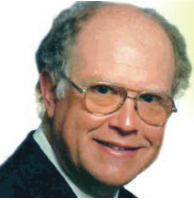Improves performance regardless of business type
Ever since I was a little kid, I wanted to be an airline pilot when I grew up. I took flying lessons while attending college to get a head start. With an engineering degree and a pilot’s license, I figured the military would handle the rest of my training. If I could land a C-130 or even a C5A on a rice paddy somewhere, I’d be able to land a 747 at Logan Airport.
Although I got a license to fly with no vision correction, my eyes weren’t quite good enough for the military, and it didn’t make sense to pay for all that training, as the competition for pilots back then was pretty severe, dominated by guys coming out of the military.
Even so, the experience taught me a lot. I had read every book on flying I could find. On my first flying lesson, I was planning on showing the instructor I already knew how to fly. We were cruising along about 110 miles per hour, and he told me to pull back on the yoke to slow the plane down to 100 mph.
“OK, bring it back to 90, 80, 70, 60,” and all of a sudden, the plane stopped flying. We fell into a full stall falling out of the sky. I was so scared, I let go of everything and held onto my seat. It’s a good thing he knew what to do.
That day, I realized I knew a lot about flying, but I didn’t know how to fly. We can’t learn how to do that from a book. I found that was also true about sailing some years later. In fact, it’s so true about many endeavors.
While attending college, I also had a full-time professional job at night. I went to summer school, so I wouldn’t have to take a full course load in the winter. It wasn’t fun, but I learned how to apply and use what I was learning. When I graduated, I was already experienced, giving me a tremendous advantage.
The other day, I found myself listening to a manager complain about the caliber of his college hires nowadays. Admittedly, many don’t have the math and analytical skills we used to take for granted with degreed engineers. So, I told him about my flying lessons.
Most airplanes have two steering stations side by side. One can fly the airplane from either seat with the one on the left preferred. If a student is in the left seat and the instructor is in the right, he/she can take over when the student gets into trouble and nobody dies.
When the instructor decides the student is proficient enough, he/she may have the student do a few takeoffs and landings. If everything looks good, he’ll have the student pull off on a taxiway, and the instructor will get out of the plane, allowing the student to do a few touch-and-goes alone.
The student has now soloed; that’s a big day, but he/she still needs lots of training before qualifying for a license. Even then, newly licensed pilots will only fly on perfect days until they get more experience (or more ratings).
I have a friend who was a senior pilot on 727s. When they promoted him to 737s, he had to go through 737 training to learn the new airplane. Then, he flew as a copilot for a short time on 737s until he got back to being a full captain again.
When someone graduates from college, they have a lot of book-learning and lab experience, but they’re not usually ready for the demands and pressures of the real world. It’s always a good idea to partner them with an experienced colleague until they become more acclimated. Mistakes in industry aren’t usually as deadly as they can be in aviation, but we still want to help them become successful instead of correcting errors.
Let’s say you’ve hired a senior person from another company, they still have to learn the nuances of your company, products, culture, etc. No matter how qualified, it’s still a good idea to partner them with a senior colleague to ensure a smooth and profitable transition. This approach works for most professions, not just pilots and engineers.
May 2024 be your best yet!
Ronald J. Bourque, a consultant and speaker from Salem, has had engagements throughout the United States, Europe and Asia. He can be reached at 603-898-1871 or RonBourque3@gmail.com.